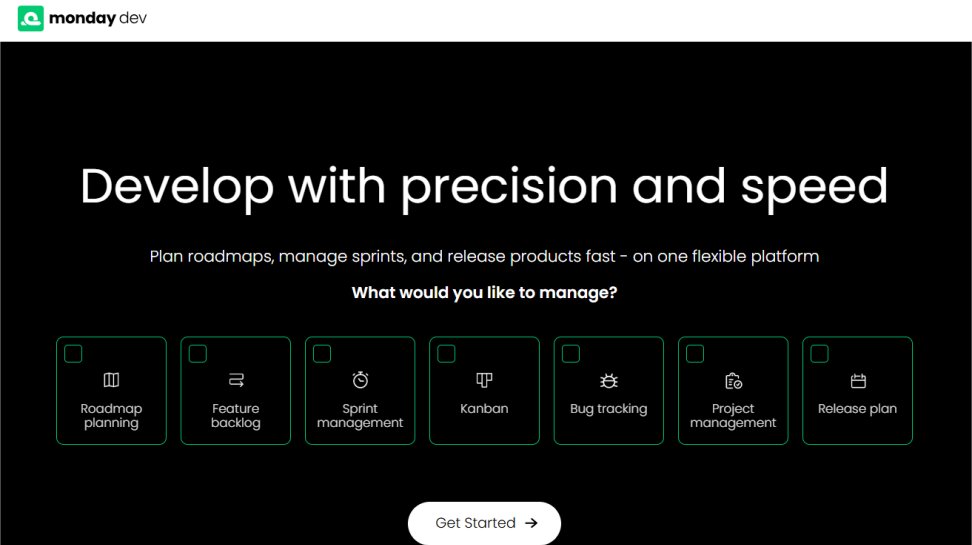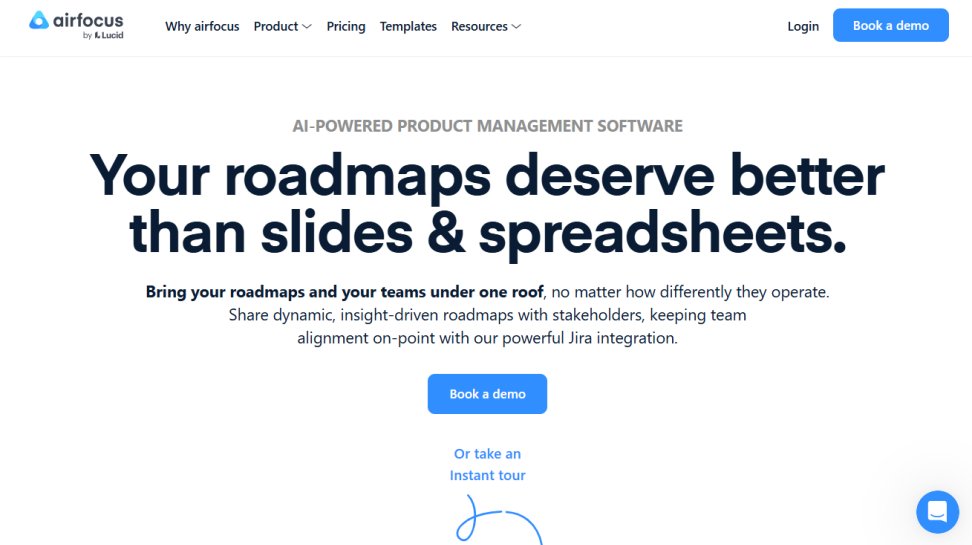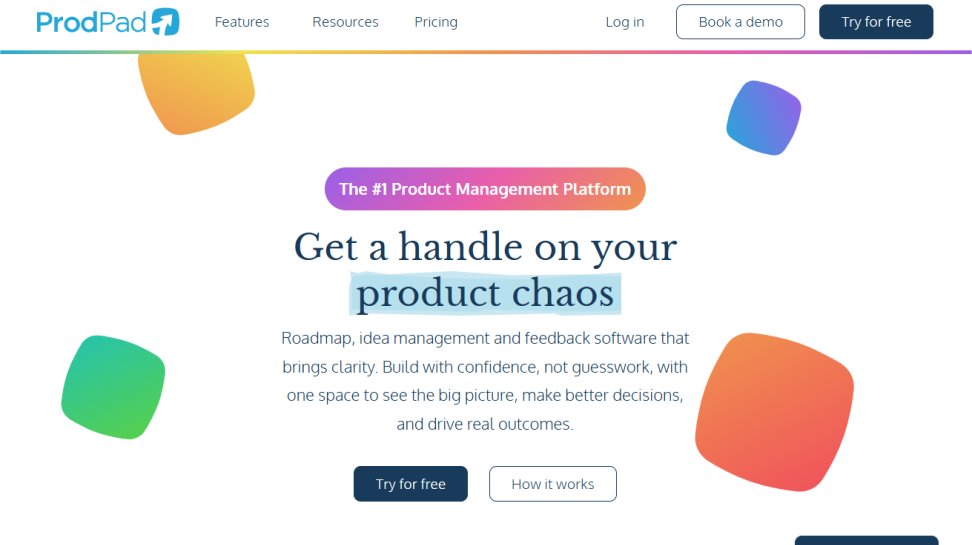Best product management software of 2025
From product design to release

We list the best product management software, to make it simple and easy to manage everything about your product, from the initial design to final release.
Note that the software in this list focuses largely on product management, and not project management. Both can often be confused because their boundaries are blurry, and some teams may be able to get away with either type of software. Some obvious project-focused choices have been missed out with the intention of finding the best apps for products, but you can read about the best project management software if that’s more your style.
Compared with other software categories, product management has clearly been an area to adapt quickly to the AI era following the huge success witnessed by tools like ChatGPT, so it shouldn’t be hard to find an option with a generative AI boost if you fancy some time-saving tech, and the list of apps available with artificial intelligence like GPT is only likely to get longer with time.
Nevertheless, here are the best product management apps available right now, each with their own distinct feature list and targeted audience.
The best product management software of 2025 in full:
Why you can trust TechRadar

Best product management software overall
1. Monday Dev
Our expert review:
Reasons to buy
Reasons to avoid
The popular project management software company monday.com released its all-encompassing Dev software which is intended to help teams track their release process from start to finish. If you’re already familiar with monday.com design philosophy, getting started with Dev will then be a piece of cake. The UI is very intuitive, with templates to help you and your team get started on the important work immediately. The initial view clearly separates epics, stories, and roadmaps, but you can get granular with your settings if you’re not satisfied with the view out of the box. While tinkering with the view and settings, you will come across its powerful automation, the thing that sets monday.com apart from its competitors, which will take away the dreariness of repetitive tasks.
When it comes to reporting options, dashboards can be customized in such a way as to show the most important data at the outset, with extensive filtering options if you have to show individual or team effort and work breakdown. With the collaboration tools inside the platform, you can ditch tools like Teams or Slack, as you can chat, call, and share documents across the platform easily. Searching for older messages has some room for improvement, but knowing how monday.com improves its software, we can expect these options to catch up to competitors in no time.
With Dev you get access to 24/7 support, amazing onboarding documents, forums, chats, and an entire library of self-help articles to get you started and troubleshoot any issues. Be ready to pay for the higher tiers though, as they offer much more automation, integrations, and dashboard combinations.
Read our full Monday Work Management review.
Best all-in-one product management software

2. Craft.io
Reasons to buy
Reasons to avoid
Craft.io looks to be a promising app for those wanting to take charge of their product development from start to finish, with tools extending beyond roadmapping and feedback, to strategy building, prioritization, and even capacity planning. You can also visualize multiple products in one view in order to ensure standardization.
As a single end-to-end piece of software, it offers features for CPOs, product managers, and product ops, which is important to ensure effective communication. Simplifying the solution also results in some cost saving compared with using different apps for different stages of the product management.
The company is big on flexibility, which in clear in the software’s simplicity and ease-of-use, but it’s lacking some of the built-in communication tools that similar project management tools have, making it a hard battle to fight for companies that can get away with using less specialized product-specific software. That said, it’s not short on integrations, with connectivity options for GitHub and GitLab, Miro, Jira, and more.
The company’s website also has a shoutout to security, which is a green flag in an area where many companies keep security behind closed doors even if they do have strong measures. It mentions everything form encryption to its Google Cloud data hosting.
Citing customers like Kimberly-Clark, Cisco Webex, and Quickbase, it’s clearly a well-respected piece of software but we feel that pricing could be more affordable as it battles other types of software relating to projects, too. Still, there are healthy discounts for paying annually.
Best product management software for AI

3. Airfocus
Reasons to buy
Reasons to avoid
If ‘2020s’ were an adjective, then Airfocus would be very ‘2020s’, because the icon-filled, neatly designed, clear interface makes it very easy to use and a reason to choose the app in itself. By nature, it’s much more than a product management platform because it can handle communications and even has a built-in AI assistant to help speed up some processes.
Being such a collaborative app, users can set up a custom branded portal for engaging with their community, including investors and customers, in order to collect insights and share ideas.
The roadmapping makes it easy to visualize progress, along with visions and goals, while the strategy management portion can handle things like risks and adjustments.
Arguably worthy of the biggest mention is its so-called AI Assist, which was introduced in beta early in 2023 ahead of a wider rollout. It works thanks to a collaboration with OpenAI, the company behind ChatGPT, and it can be used in a number of text-related scenarios to create and edit text: things like writing a user story, writing a release note, brainstorming ideas, improving existing writing, checking for spelling and grammar mistakes, translating, and adjusting language to be less or more technical. While AI continues to be a growing trend, very few product management apps have used it to their customers’ benefits yet, so Airfocus gets a big gold star for this.
Pricing ranges from affordable to not-so-affordable, so there are options for most types of businesses, and paying annually will save you two months’ worth of payments.
Best product management software for development

4. Productboard
Reasons to buy
Reasons to avoid
This is an app that promises to “get products to market, faster” by understanding what customers need and aligning everyone around your roadmap. The process has a notable emphasis on feedback which helps link facts and figures with feelings and emotions to create a more rounded approach to product development, all under one roof. This can include surveys, interviews, and social media feedback.
Its emphasis on feedback combined with its other features means that Productboard is a powerful tool for strategizing, helping teams to understand users and markets and to identify advantages and disadvantages. This all ties into analytics to make it easy to get a quick overview.
Some of the firm’s customers include Zoom, Salesforce, and Avast, which gives prospective customers an indication of how it could be used and how valued it is. Some of its customers also act as integrations for Productboard users, plus others like Slack, Intercom, Zapier, and Miro. There are also some APIs available and an option to submit requests for more integrations which the team promises to at least consider.
Productboard’s commitment to security is evident, given its entire page dedicated to the matter. You can read about things like encryption, its AWS data hosting, and compliance, as well as features that you can enable as a user for a security boost like SSO and IP whitelisting. Pricing for the Essentials package is attractive, but the Pro plan looks expensive in comparison, though it does present more possibilities. A pair of higher-level tiers require a customized quote, or you can pick the free Starter plan which is very limited but can be great for startups and SMBs with limited budgets.
Best product management software for collaboration

5. ProductPlan
Reasons to buy
Reasons to avoid
A product’s journey is ProductPlan’s clear intention with this software, which has powerful visual roadmapping functionalities available in a multitude of views designed for specific cases, like marketing and sales, or engineering. When working on multiple products, or you’re at different stages of development, you can use ProductPlan to prioritize workload and designate accountable workers.
In terms of collaboration, the built-in commenting feature helps to keep conversations linked to specific tasks rather than thrown into a catch-all Slack channel, but you can still @mention people if you need certain colleagues to be notified more abruptly.
While the list of integrations isn’t as extensive as others, the hand-picked third parties are all very useful to product development. Expect ProductPlan to work with GitHub, Trello, Jira, Zapier, and a few others.
Pricing is reasonable, but there are cheaper alternatives from other companies if you don’t need all of the features. The Basic plan has just about everything most smaller companies need, while Professional is more geared toward larger enterprises. There’s also a more customizable Enterprise tier, too. A lack of lower-end free or budget tiers is a weakness of ProductPlan, and only the Basic plan is available as a trial. For the more expensive plans, you’ll need to get in touch to request a live demo, which is a bit more hassle.
Best product management software for customization

6. ProdPad
Reasons to buy
Reasons to avoid
While some product management apps mirror wider project management software in terms of usability and layout, ProdPad may take a little more effort for unfamiliar users to become familiar with the app. The way it lays things out may be different to others, but all the familiar tools are there.
The priority chart is especially useful for visualizing the impact of an idea compared with the effort required, helping companies to identify quick wins and other valuable projects. Taking a step back, you can also check an overview of your company’s entire product portfolio to make sure that the update cycle is happening as it should be.
ProdPad is another app to be an early adopter of artificial intelligence, and its GPT-powered assistant promises to do the work of five product managers. Users can free up time by having the AI write up ideas, surface themes in feedback, and automatically link feedback to ideas.It uses GPT-3 at the moment, but given the company’s commitment to AI it’s likely to adapt as generative AI continues to improve.
Pricing is highly customizable, but opt for everything and you could spend a pretty fortune. On top of the core list of features, you’ll either need to pick an Essentials or Advanced version of Idea, Feedback, or Roadmaps. Go for any version of two, or all three, of the plans, and you can spend over $100 per person per month. That’s for editors, but an unlimited number of reviewers is free. Sign up annually and you’ll save 20% compared with a monthly subscription.
Best product management software FAQs
What is product management tool?
The best product management tools are basically a Swiss Army knife for teams creating products. It helps with planning, tracking progress, managing tasks, and keeping everyone in the loop. It can be a lifesaver in staying organized and efficient. The best product management tools incorporate a range of external factors to help with development, not least feedback from testing for improvements, while also communicating effectively with colleagues.
How we tested the best product management software
To test for the best product management apps we first set up an account with the relevant software platform, whether as a download or as an online service. We then tested the service to see how the software could be used for different purposes and in different situations, with varying requirements as per different businesses’ needs, while comparing the software to other, similar tools. Also forming part of the testing was detailed comparison between what each service offers, and its value for money.
Read how we test, rate, and review products on TechRadar.
Get in touch
- Want to find out about commercial or marketing opportunities? Click here
- Out of date info, errors, complaints or broken links? Give us a nudge
- Got a suggestion for a product or service provider? Message us directly
- You've reached the end of the page. Jump back up to the top ^
Sign up to the TechRadar Pro newsletter to get all the top news, opinion, features and guidance your business needs to succeed!
With several years’ experience freelancing in tech and automotive circles, Craig’s specific interests lie in technology that is designed to better our lives, including AI and ML, productivity aids, and smart fitness. He is also passionate about cars and the decarbonisation of personal transportation. As an avid bargain-hunter, you can be sure that any deal Craig finds is top value!
